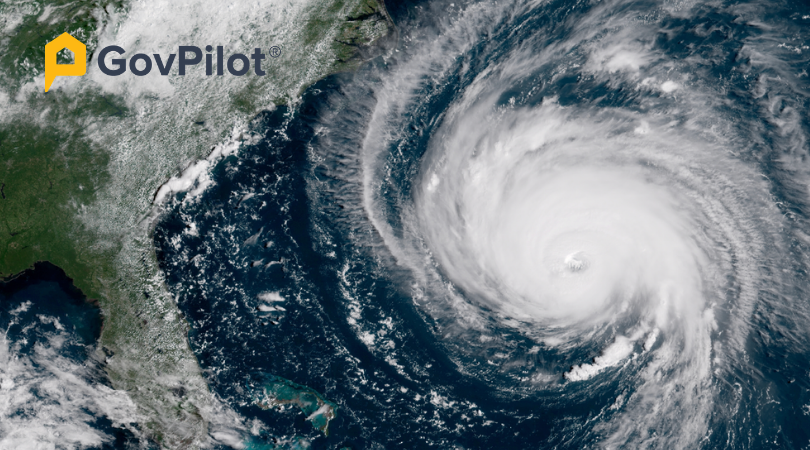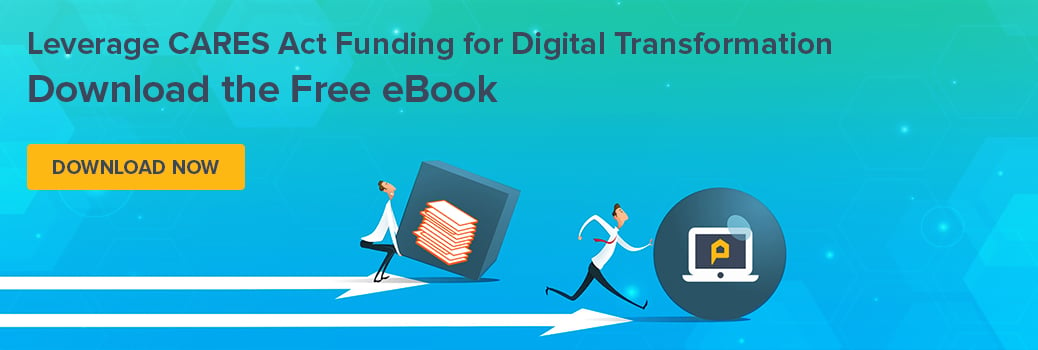The Atlantic Hurricane Season - whose activity is predicted to be above average this year - officially commenced on June 1st and runs through November 30th. In the West, Fire Season has begun. Tornados and flash flooding will remain a threat in the midwest and south until the fall. If the last several years have taught us anything it is that communities large and small across the U.S. must be well prepared.
How can local governments prepare for, and continue to deliver quality services during and following disruptions ranging from a ransomware attack to a snowstorm to a flood? Or during a global pandemic, civil unrest, or major natural disaster like Hurricane Harvey, or SuperStorm Sandy?
In a world of ever increasing disruption, digitization provides security, efficiency, and convenience.
For local governments, resilience means having the infrastructure, systems, training, knowledge, and capabilities securely in place before a crisis so that it is better positioned to respond, adapt, and overcome challenges. The time to prepare for a crisis is well before it happens. In doing so, a local government and its constituents will be confident in its continuity of operations, its predetermined planning and training, and the ability to recover promptly, predictably, and efficiently. This is not to say that even with proper preparedness there won’t be difficulties in the event of a disruption, but the resilience that preparedness fosters goes a long way in the response and recovery process.
Digital transformation and the modernization of IT infrastructure is a critical component of resilience - for individuals, businesses, and governments alike. We see this proven time and again. When flooding destroys paper documents and servers in a city hall. When downed trees and power lines from a tornado close roads or a global pandemic keep government employees unable to access their office, local governments must maintain business continuity. Here are three ways that digital transformation enables resilience.
- Cloud Storage Mitigates Physical Risks - When a bomb cyclone caused massive flooding in Hamburg, Iowa in March of 2019, city hall was flooded. Paper records, on-site computers and servers, and all attendant data are at risk from fire and floods. Try leading a recovery effort and applying for Federal Assistance when necessary records and documentation have been underwater. With a cloud-based government management system, data is secure, backed up every 15 minutes, and easily accessible at any time from anywhere. Cloud-based, easily searchable, aggregated data vastly improves the speed of recovery - especially when it comes time to work with State and Federal agencies to design long-term recovery programs.
- Digitization Ensures Business Continuity - When the COVID-19 pandemic began, officials in Jackson Township, New Jersey realized they wouldn’t be able to provide services if their employees couldn’t get to the office. Even if government offices are operational, business continuity will be threatened if employees must be at their office desk in order to work, but can’t due to road closures, or other dangerous conditions. If a government cannot provide services, constituents will suffer. Again, cloud-based government management software ensures the health and safety of employees and constituents, as well as business continuity, by making application for services and backend processing accessible from any location, from any device with an internet connection.
- Digital Transformation Keeps Residents Safe - With digital applications and resources available to the public via a government website, residents can prepare for any disruptions in advance. Use a GIS map to share floodplains, so property owners can understand and mitigate their risk in advance by retrofitting their property and purchasing insurance. Highlight evacuation routes and community shelters on your map. Store publicly available information such as ownership and tax assessment records directly on a GIS map, making damage assessment easier. Provide critical pre-disaster resources like these free e-learning programs from national disaster recovery nonprofit, SBP to educate local residents and business owners on best practices to implement. Enable residents to report concerns and submit for government services via digital forms from the safety of their homes.
Resilience for local governments is essential. Digital transformation and the cloud-based digitization of services can provide the security and accessibility required to ensure that governments maintain business and operational continuity in the event of disruption. With billion dollar weather related disasters on the rise across the country, now is the time to consider upgrading your IT infrastructure and digitizing your government. With GovPilot, it is not as hard as you might think.







